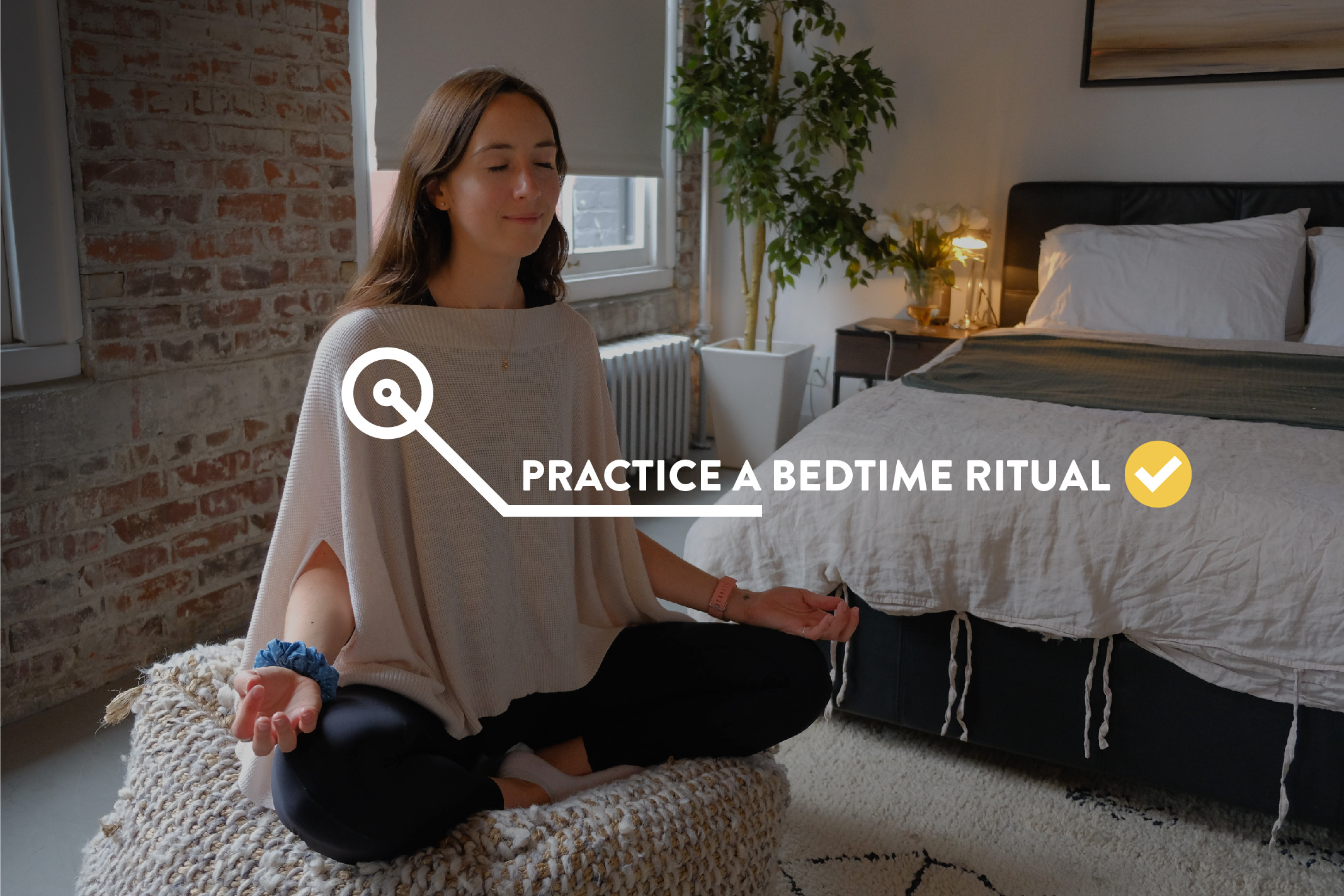Routines act like cues for our bodies and minds. Having established routines provide regularity and consistency with expected results. Establishing a pre-bed routine creates a cue to your body that sleep is coming. The result is that your body begins to physiologically and mentally prepare for sleep before crawling into bed, allowing you to fall asleep easier, for longer. Habitually engaging in a pre-bed routine will aid great sleep health.
The importance of regular sleep
Cueing your body for sleep at a regular time every night has been proven to improve sleep. A study looking at the Sleep Regularity Index (SRI) found a number of consequences to irregular sleep. Sleep irregularity refers to an irregular sleep and wake schedule. For example, going to bed at 9 pm one night, 12 am the next, and 10 pm another evening, and not getting a consistent number of hours of sleep.
What the authors of the study found was a delay in falling asleep, increased daytime fatigue, with an increased risk for cardiovascular disease, obesity, diabetes, stress, and depression [1]. Other studies have found that poor sleep is caused by many factors… quite the laundry list [2]. So as you can imagine, a key factor in forming good sleep habits is being consistent in your routine.
We know that good sleep improves both mental and physical health. Benefits to regular, adequate sleep include weight loss, improved immune function, increases muscle repair, decreased stress, increased cognitive capacity (for example problem solving and attentiveness) [3]. All of these contribute to improved well-being and increased longevity [4].
How to help your clients form better sleep habits
What are some of the best ways for you to become the Sandman for your clients? Leveraging habit tracking is a great way to identify the consistency and regularity that your clients are engaging in a pre-bedtime routine.
However, to truly set your clients up for success on this habit, you will need to provide education and coaching. Start by identifying their current pre-bed routine, and substitute the “not so good” sleep behaviors with positive ones. The fewer changes to this potentially large and complex habit, the better. The smaller the change needed to make this habit healthy, the more likely it will be achieved.
Sleep positive:
- Darkness; stop using all electronics (even smartphones and tablets) at least an hour before bed, dim lights whenever and wherever possible, minimize all light in the bedroom especially.
- Schedule; have a reminder timer an hour before bed to start the routine.
- Unwind rituals; while it is great to sneak in activities that prep for the next day (packing gym bag for tomorrow’s workout, or prepping healthy meals for tomorrow), by the last half hour before bed, the goal is to relax to mentally and physically unwind. Examples could include: meditating, journaling, reading a book, taking a bath, or light stretching.
Sleep negative:
- Electronic devices and light; avoid these before bed as they cause wakefulness.
- Eating and drinking; doing either of these close to sleep can lead to disruptive sleep.
- Alcohol and other substances; although alcohol may make you feel drowsy, it will prevent you from entering deep sleep. This is similar to other depressant type substances like marijuana.
- Irregular sleeping; inconsistent bedtime, or napping too close to the evening will alter your circadian rhythm and affect your sleep quality.
- Use the above points to help coach your clients to healthier pre-bed routines. As you may notice, this is a slightly more advanced habit as it could potentially entail a number of changes to their pre-bed behavior. Best practice is to pick one behavior to change. Once satisfied that this has become an automated habit, stack another behavior onto this one to create a chain of pre-bed habit changes. But one step at a time.
Bedtime rituals in a nutshell:
Pre-bed routines are important in establishing adequate quality, and quantity of sleep.
Not enough quality sleep can have a number of negative effects on the body and mind.
Help your clients achieve better sleep habits by replacing sleep negative behaviors for sleep positive behaviors! Remember to only focus on one behavior at a time as to not overwhelm or discourage your client!
References:
- Jessica R. Lunsford-Avery, Matthew M. Engelhard, Ann Marie Navar & Scott H. Kollins. (2018). Validation of the Sleep Regularity Index in Older Adults and Associations with Cardiometabolic Risk. Scientific Reports 8, Article number: 14158
- https://www.healthline.com/health-news/its-not-just-for-kids-even-adults-appear-to-benefit-from-a-regular-bedtime#It%E2%80%99s-not-just-about-getting-enough-sleep
- Whiting, W.L. & Murdock, K.K. Emerging adults’ sleep patterns and attentional capture: the pivotal role of consistency. Cogn Process (2016) 17: 155. https://doi.org/10.1007/s10339-016-0754-9
- Schirmer, M. (1983). When sleep won’t come. Journal of Gerontological Nursing. 9, 17-21.

